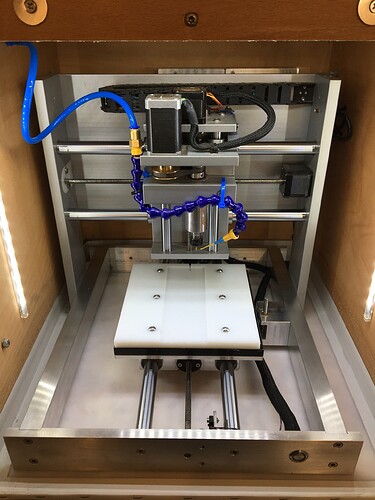I’m running a Carbide3C #201-Z cutter (1.4", 3 flute, square) on 6061 aluminum that’s 1/4" thick. My cut parameters are:
Feedrate 500
PLunge Rate 50.7
RPM 10,000
Step Down 0.100
Ramp angle 3.0
Mill Direction: Climb
The profile is a bracket, with a simple 2-D shape that is 100% exterior profile. Basically, I just want to “cut out” a shape, without any internal geometry, or even any contouring. All passes will result in straight walls that go through the piece, to free it from the stock.
All goes well for the first 40 passes or so (4.0mm down) but then I suddenly get chatter, and the cutter hangs. I tossed my first piece, set a second one, and tightened my clamps more than the first time. The result was identical - chatter after about 40 passes, with 2.4mm of stock yet to be cut.
Do you think this is a clamping issue, or settings? I do get a tiny bit of chatter during the early (successful) passes, but only when ramping into the next lap around, and nothing hangs. The pass continues, and is otherwise successful.
Clamping is via toe clamps, in pairs, at ends of the 2x3" workpiece. I also have a registration pin on a short side, which just helps me align the stock quickly. My worry is that there is only around 1/4" of stock left in a few places, so the clamping force might be reduced if that stock starts to deform. Then again, the bit cutter seems to continue to clear fine, meaning the kerf hasn’t closed, so I feel like deformation isn’t the issue.
Any ideas what I’m doing wrong?

